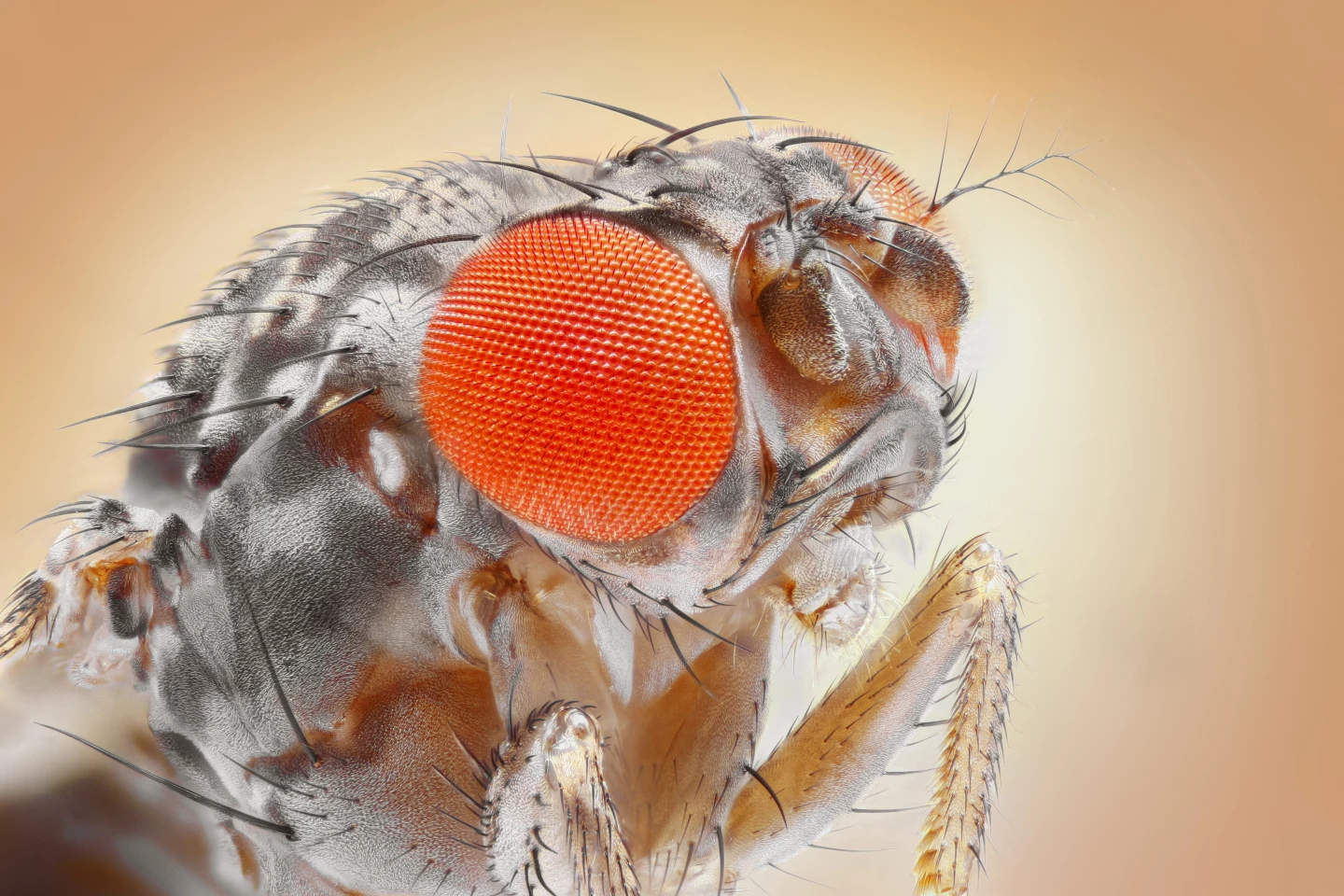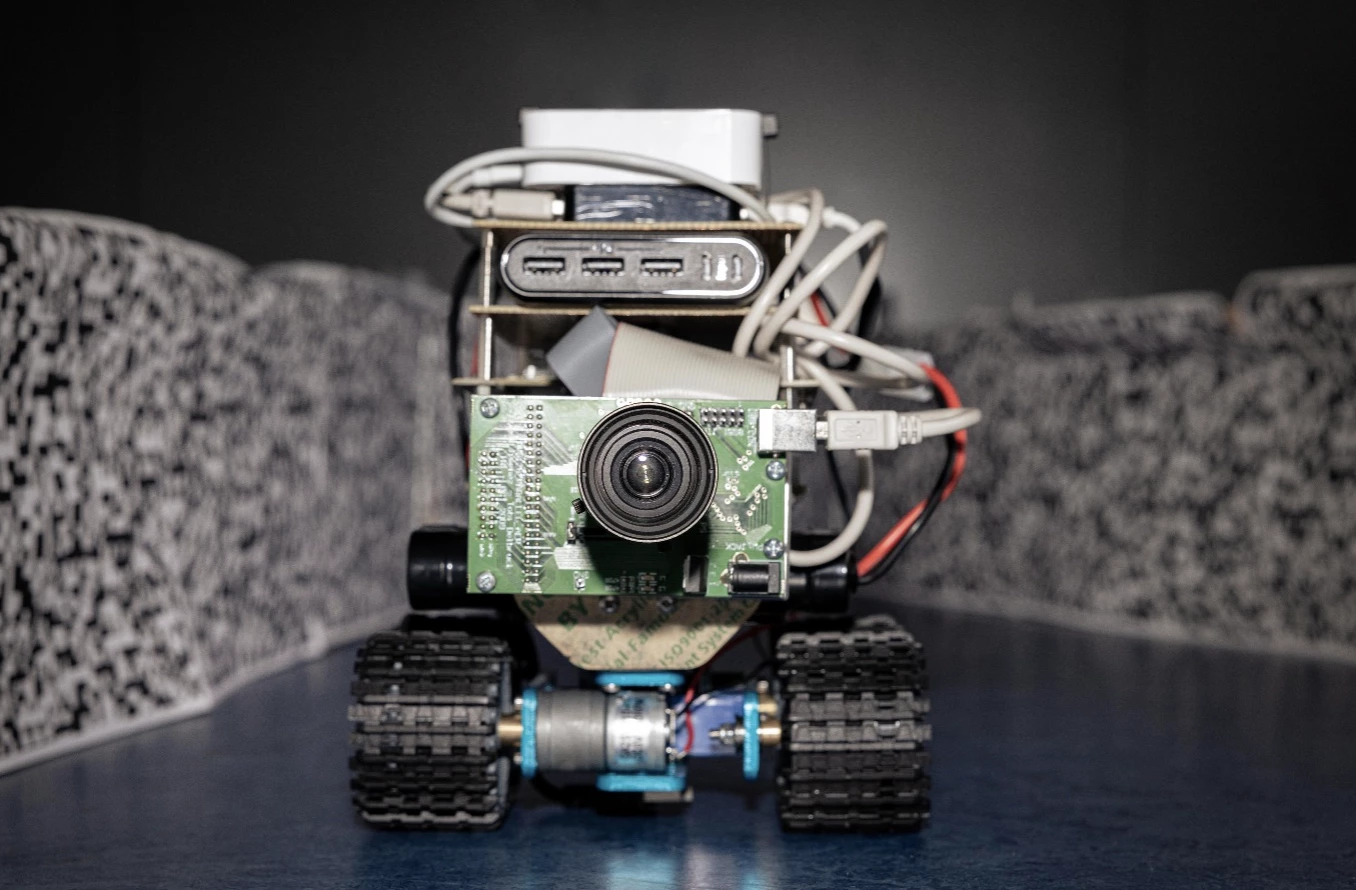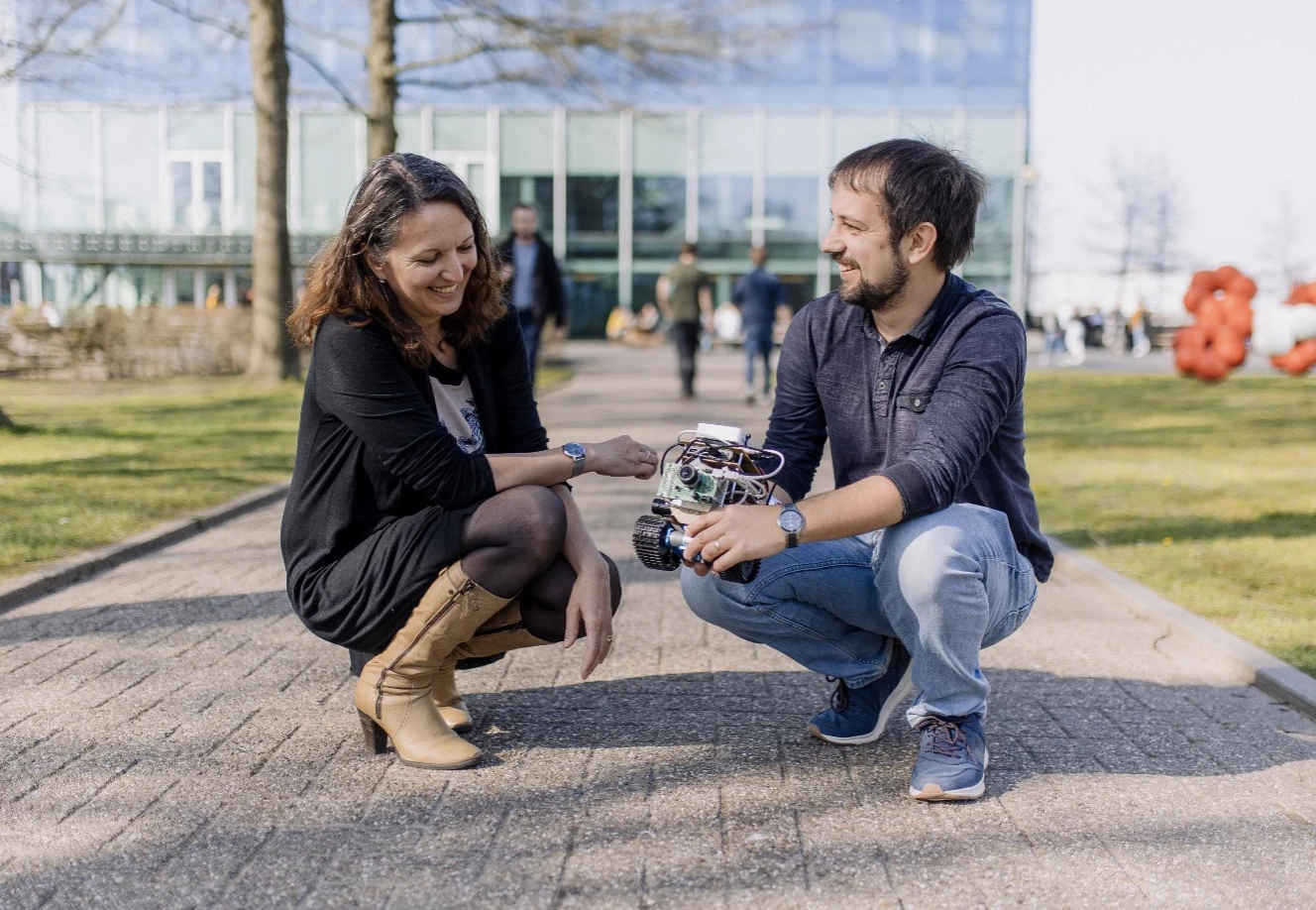In an age of increasingly advanced robotics, one team has well and truly bucked the trend, instead finding inspiration within the pinhead-sized brain of a tiny flying insect in order to build a robot that can deftly avoid collisions with very little effort and energy expenditure.
An insect's tiny brain is an unlikely source of biomimicry, but researchers from the University of Groningen in the Netherlands and Bielefeld University in Germany believed it was an ideal system to apply to how robots move. Fruit flies (Drosophila melanogaster) possess remarkably simple but effective navigational skills, using very little brainpower to swiftly travel along invisible straight lines, then adjusting accordingly – flying in a line angled to the left or the right – to avoid obstacles.
With such a tiny brain, the fruit fly has limited computational resources available to it while in flight – a biological model, the scientists believed, that could be adapted to use in the 'brain' of a robot for efficient, low-energy and obstacle-avoiding locomotion.
"Like when you’re on a train," said physicist Elisabetta Chicca, from the University of Groningen. "The trees nearby appear to move faster than the houses far away. Insects use this information to infer how far away things are.
"What we learn from this is: if you don’t have enough resources, you can simplify the problem with your behavior," she added.

In fruit flies' brains, the motion of surrounding objects is processed through the optical neurons T4 and T5. With the help of Bielefeld University neurobiologist Martin Egelhaaf, the team algorithmically mimicked this neural activity in their small robot 'brain', giving it the ability to process directional information to move efficiently and avoid collisions with any obstacles in its path.
"Much of robotics is not concerned with efficiency," said Chicca. "We humans tend to learn new tasks as we grow up, and within robotics, this is reflected in the current trend of machine learning. But insects are able to fly immediately from birth. An efficient way of doing that is hardwired in their brains."
The end result is a compact robot with one main objective – to steer towards the area with the least movement detected. University of Groningen's Thorben Schoepe, who engineered the hardware, put the wheeled robot through a series of tests, and found that it would center itself between objects, and also deftly adjust its path to guide itself around obstacles – as an insect would in flight.

"The model is so good," Chicca said, "that once you set it up, it will perform in all kinds of environments. That’s the beauty of this result."
The team believes this is the first study of its kind to focus on obstacle avoidance, and it takes a huge step forward in the development of neuromorphic hardware in robotics. In the future, such a machine could be used to navigate cluttered terrain such as disaster sites, with extremely low energy output, and it could be equipped with different kinds of sensors depending on use, such as radar to detect structureless objects.
"We developed a robot inspired by insects," said Chicca. "It has remarkable capabilities to travel in dense terrain, avoiding collisions, crossing gaps and selecting safe passages. These capabilities are accomplished by a neuromorphic network steering the robot toward regions of low apparent motion. Our system leverages knowledge about vision processing and obstacle avoidance in insects."
The research was published in the journal Nature Communications.
Source: University of Groningen






